Paxman and Diesel Rail Traction
Related Pages:
Paxman Diesel Engines since 1934 • Paxman Rail Traction Diesel Engines • Paxman Diesels for the World's Railways • Fell Locomotive - No 10100
This page is about Paxman and diesel rail traction applications from 1932 to the present day. The Steam Engineering page includes the history of Paxman steam locomotives.
More history and technical details about most of the Paxman engines referred to below can be found by going to the page Paxman Diesel Engines since 1934. Links to the relevant sections are provided below.
For an explanation of the codes used to identify an engine's type see the page on Identifying Paxman Diesel Engine Types.
Use the 'Back' button on your browser to return to your place on this page.
Beginnings
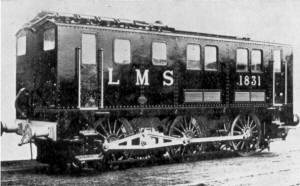 The first Paxman diesel engine installed in a locomotive by a British railway was a six-in-line 6VXS producing 412 bhp at 750 rpm. The engine was one of the first to be built to the Stevens Patent with an all-welded steel frame (i.e. a fabricated crankcase) and was mounted on the chassis of an old Johnson 1F 0-6-0T steam locomotive, originally built at the Vulcan Foundry and delivered in September 1892 to the Midland Railway where it became No 1999. In 1907 it was renumbered No 1831. A proposal for its conversion to a diesel-hydraulic experimental shunter, at an estimated cost of £5,660, was dated 7th October 1931. (The actual cost of conversion was £5,967.) The order, No 8071, for the conversion was dated 2nd February 1932 and signed by H G Ivatt. The work of altering and reconstructing the locomotive, which was fitted with a Haslam & Newton hydraulic transmission, was undertaken by the LMS at its Derby workshops, under the supervision of W A Stanier (later Sir William Stanier) who had been appointed CME of the LMS in January 1932. The Paxman 6VXS engine was despatched from Colchester to Derby in July 1932 and the conversion completed in November that year. After conversion, the total weight of No 1831 in working order was 46 tons 2 cwts. The first trial run took place on 19th December 1932 but No 1831 was not taken into LMS stock until May 1934. (1) In 1939 or 1940 it was converted into a mobile generating plant (MPU (Mobile Power Unit) No 3) for standby service and was still in existence in mid-1951.
The first Paxman diesel engine installed in a locomotive by a British railway was a six-in-line 6VXS producing 412 bhp at 750 rpm. The engine was one of the first to be built to the Stevens Patent with an all-welded steel frame (i.e. a fabricated crankcase) and was mounted on the chassis of an old Johnson 1F 0-6-0T steam locomotive, originally built at the Vulcan Foundry and delivered in September 1892 to the Midland Railway where it became No 1999. In 1907 it was renumbered No 1831. A proposal for its conversion to a diesel-hydraulic experimental shunter, at an estimated cost of £5,660, was dated 7th October 1931. (The actual cost of conversion was £5,967.) The order, No 8071, for the conversion was dated 2nd February 1932 and signed by H G Ivatt. The work of altering and reconstructing the locomotive, which was fitted with a Haslam & Newton hydraulic transmission, was undertaken by the LMS at its Derby workshops, under the supervision of W A Stanier (later Sir William Stanier) who had been appointed CME of the LMS in January 1932. The Paxman 6VXS engine was despatched from Colchester to Derby in July 1932 and the conversion completed in November that year. After conversion, the total weight of No 1831 in working order was 46 tons 2 cwts. The first trial run took place on 19th December 1932 but No 1831 was not taken into LMS stock until May 1934. (1) In 1939 or 1940 it was converted into a mobile generating plant (MPU (Mobile Power Unit) No 3) for standby service and was still in existence in mid-1951.
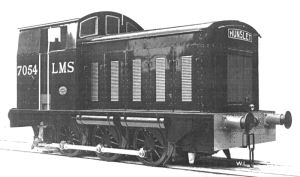 In 1933, while experiments were taking place with No 1831, the LMS decided to carry out extended trials with diesel shunters and placed orders for eight diesel-mechanical types which were delivered in 1934. Four were built by the Hunslet Engine Co of Leeds and four by other private locomotive builders. With one exception all were fitted with different makes of diesel engine, and each had a slightly different transmission arrangement for evaluation purposes. (1) One of the Hunslets, LMS 7054, was powered by a Paxman 6 cylinder VZS engine, No 24166, despatched from the factory on 13th July 1934. Similar in design to the 6VXS installed in LMS 1831, the smaller 6VZS with a rating of 180 bhp at 900 rpm. Transmission was via a Vulcan-Sinclair hydraulic coupling to a Humphrey-Sandberg free-wheel and a 3-speed gearbox giving speeds of 4, 8 and 13 mph. The locomotive had a service weight of 30.5 tons and a maximum speed of 13 mph. LMS 7054 was sold to the Admiralty in May 1943 and worked continuously for the Admiralty until being sold back to Hunslet in 1949. It received its first complete overhaul in the Hunslet shops in 1950 before taking up heavy shunting work once more. (2) The locomotive was known to be still at work in industry in 1957.
In 1933, while experiments were taking place with No 1831, the LMS decided to carry out extended trials with diesel shunters and placed orders for eight diesel-mechanical types which were delivered in 1934. Four were built by the Hunslet Engine Co of Leeds and four by other private locomotive builders. With one exception all were fitted with different makes of diesel engine, and each had a slightly different transmission arrangement for evaluation purposes. (1) One of the Hunslets, LMS 7054, was powered by a Paxman 6 cylinder VZS engine, No 24166, despatched from the factory on 13th July 1934. Similar in design to the 6VXS installed in LMS 1831, the smaller 6VZS with a rating of 180 bhp at 900 rpm. Transmission was via a Vulcan-Sinclair hydraulic coupling to a Humphrey-Sandberg free-wheel and a 3-speed gearbox giving speeds of 4, 8 and 13 mph. The locomotive had a service weight of 30.5 tons and a maximum speed of 13 mph. LMS 7054 was sold to the Admiralty in May 1943 and worked continuously for the Admiralty until being sold back to Hunslet in 1949. It received its first complete overhaul in the Hunslet shops in 1950 before taking up heavy shunting work once more. (2) The locomotive was known to be still at work in industry in 1957.
From then until the outbreak of the Second World War deliveries of Paxman engines for rail traction were mainly of the small sizes: RQ and RW types with outputs in the range of 44 to 200 hp. The RQ was much used for small industrial locomotives by a number of builders such as Hunslet, Hudswell Clarke, Barclay, Baguley and especially Hibberd. Nearly 30 locomotives with RQ engines were built by Hibberd for the West African goldfields. After the war a flameproofed version of the RQ was fitted by the North British Locomotive Co in their 100 bhp 'Miner' locomotives developed for working in underground mines. These were supplied to the National Coal Board in Britain, to Rhodesia (Northern Rhodesia, now Zambia) and Australia. (3) (It is known that forty-five 100 bhp Miners were sold to Canadian customers. Most, if not all, of these locomotives had Crossley 5BWL engines, not Paxman RQEs.)
One preserved pre-war locomotive with an RQ engine is an 0-4-0 diesel mechanical shunter built in 1937 by Hudswell Clarke for New Zealand. Its 40 bhp engine drives through a three speed gearbox giving a top speed of 9 to 10 mph. A preserved RW-engined locomotive is No 333 at the East Anglian Railway Museum, Chappel, near Colchester. This 0-4-0 was built in 1938 by Andrew Barclay for the Air Ministry and originally carried the number AMW 144. Its eight cylinder RW engine, No 1100, produces 150 bhp at 1,000 rpm. Drive is through a fluid flywheel, a Wilson 3 speed epicyclic gearbox, Bostock & Bramley reversing gearbox, and worm gear final drive.
Among preserved post-war locomotives with RW engines are two 0-4-0 shunters built in 1948 and 1949 to a standard Hudswell Clarke design by F C Hibberd & Co Ltd at their Park Royal Works in West London, for Guinness's Park Royal Brewery. Named 'Carpenter' and 'Walrus' after the Jabberwocky characters which featured in 1930s Guinness advertisements, they were used to shunt malt trains and were the first locomotives to be purchased by Guinness for the Park Royal site. Each is powered by a 6 cylinder RWT engine developing 144 bhp at 1,250 rpm, driving a self-changing gearbox giving top speeds of 2½ mph in first gear, 5 mph in second, 7 mph in third and 11 mph in top. They remained in service with Guinness at Park Royal until being retired in 1985. (4)
In the late 1930s Paxman introduced its 6.7/8" bore x 10" stroke RZ engine, the 6 cylinder version of which developed 274 bhp at 1,000 rpm. The range was dropped at the outbreak of war. A 6RZ was installed in a Hunslet eight wheel locomotive for local freight and heavy port shunting duties on the Trinidad Government Railways in 1940. The locomotive and its original engine were still at work in 1955. (3)
Edward Paxman felt convinced there was a future for the high speed 7" bore Vee engine in rail traction applications. Consequently, though this type of engine was originally developed for marine and industrial applications, its future for traction duty was always kept in mind during the design stage. However, with the exception of the Crompton Parkinson shunter described below, the demands of war production between 1939 and 1945 necessitated the Company's active interest in rail traction being put on hold.
Crompton Parkinson 0-6-0 Diesel-Electric Shunter
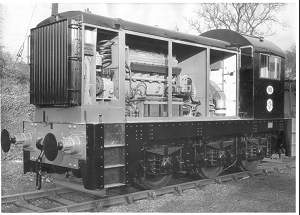 In 1940 Crompton Parkinson Ltd planned to develop an experimental diesel-electric locomotive incorporating its own electrical equipment. In October that year Paxman contracted to supply an 8-cylinder VRB engine to Crompton, on loan, for the project. No doubt because of wartime conditions the project progressed slowly. A Paxman sheet of contractual details issued in March 1942 quotes a Crompton Parkinson order of 11th September 1941. This gave the engine rating as 400 bhp at 1,500 rpm and stated that Paxman was to supply the underbed on which the engine, the Crompton DC traction generator and the canopy were to be mounted. (An article in the April 1947 issue of Diesel Railway Traction was incorrect in reporting that an 8RPL engine was being fitted.) The locomotive was built by Andrew Barclay Sons & Co Ltd of Kilmarnock, the mechanical parts being designed and constructed 'to the order of' Crompton Parkinson Ltd. By spring 1945 the 0-6-0 shunter had been completed and, after some test running, it was despatched by Andrew Barclay to Crompton Parkinson at Chelmsford on 1st October 1945. There is evidence of the locomotive being trialled subsequently at the Smethwick Works of the Birmingham Railway Carriage & Wagon Co in 1945-46 and at Temple Mills, Stratford, E London in 1947.
In 1940 Crompton Parkinson Ltd planned to develop an experimental diesel-electric locomotive incorporating its own electrical equipment. In October that year Paxman contracted to supply an 8-cylinder VRB engine to Crompton, on loan, for the project. No doubt because of wartime conditions the project progressed slowly. A Paxman sheet of contractual details issued in March 1942 quotes a Crompton Parkinson order of 11th September 1941. This gave the engine rating as 400 bhp at 1,500 rpm and stated that Paxman was to supply the underbed on which the engine, the Crompton DC traction generator and the canopy were to be mounted. (An article in the April 1947 issue of Diesel Railway Traction was incorrect in reporting that an 8RPL engine was being fitted.) The locomotive was built by Andrew Barclay Sons & Co Ltd of Kilmarnock, the mechanical parts being designed and constructed 'to the order of' Crompton Parkinson Ltd. By spring 1945 the 0-6-0 shunter had been completed and, after some test running, it was despatched by Andrew Barclay to Crompton Parkinson at Chelmsford on 1st October 1945. There is evidence of the locomotive being trialled subsequently at the Smethwick Works of the Birmingham Railway Carriage & Wagon Co in 1945-46 and at Temple Mills, Stratford, E London in 1947.
Right: The Crompton Parkinson shunter after being re-engined with the 12-cylinder RPH Series I in 1949.
In April 1948 Crompton Parkinson placed an order with Paxman for the locomotive to be re-engined with a 12-cylinder RPH Series I, rated at 430 bhp at 1,250 rpm. 400 bhp was required to drive the generator and another 15 bhp to drive the radiator fan. The re-engining was carried out the following year at Paxman's Britannia Works. The original generator and radiator (the latter with some modifications) were retained. After some local trials, including a run on British Railways track to Thorpe-le-Soken, the 45 ton locomotive was delivered to Crompton Parkinson's customer, Stewarts and Lloyds, at their Corby steelworks in either late November or early December 1949. It was the first diesel-electric shunter to go into service at Corby steelworks where it subsequently gave many years of good service. There is a record of Paxman spares being supplied for it as late as 1973.
Post-War Developments
1949 saw a sharp increase in Paxman's diesel rail traction activities. Engines were supplied for service on the railways of Ceylon (Sri Lanka), Bolivia, Norway, and South America. At home Paxman engines were installed in prototype diesel locomotives built for operation on the British railway system. These included a mixed traffic locomotive (11001), a prototype Type 1 locomotive (10800), and the Fell locomotive (10100), each of which is described below.
In the late 1940s or early 1950s Paxman recruited Dick Stockings to play a leading role in the Company's diesel rail traction engineering activities. Mr Stockings had served his apprenticeship at the LNER's large Doncaster Locomotive Works and continued his career with the railways until joining Paxman's Drawing Office staff at Colchester. He left in 1956 to rejoin British Railways (5), moving to Norwich, and was one of their diesel traction experts up to his retirement. Subsequently (possibly in 1961), Paxman recruited Howard Scott to head up the technical side of Paxman's rail traction work. Mr Scott had previously held a senior position with the North British Locomotive Company at Glasgow and stayed with Paxman until his retirement in 1973. During the 1980s and early 1990s Paxman's leading rail traction engineer was Denis Turner. Denis joined the Company in 1944 and, apart from National Service, spent his whole career with Paxman until retiring in 1992. He was a fount of knowledge about the Company's work on rail traction and was in frequent demand, even after retirement, to give talks on the subject. He had a keen interest in Paxman's history and initiated the depositing of valuable Company archive material with the Essex Record Office.
Diesel rail traction was given a tremendous boost by the British Railways Modernisation Plan, published in January 1955. The British Transport Commission planned to invest £1,200 million of public money on the modernisation and re-equipment of British Railways over about 15 years. A major part of the Plan was to replace steam with electric and diesel traction, the latter to include some 2,500 main-line diesel locomotives. During the first phase orders were placed for at least 170 new main-line diesel locomotives and some 1,000 multiple-unit diesel passenger vehicles. (6)
In what follows there are references to Types 1, 2 and 4 locomotives. In 1957 the then British Transport Commission introduced a new numbering system. For diesel locomotives, numbers were prefixed by the letter 'D' and the first number referred to the Type which indicated power rating. Type 1 covered the power band of 800 to 1,000 bhp; Type 2 - 1,000 to 1,365 bhp; Type 3 - 1,500 to 1,750 bhp; Type 4 - 2,000 to 2,750 bhp; Type 5 - 3,000 bhp and above. (For some reason there were gaps in the above scheme!)
No 11001 - Mixed Traffic Locomotive
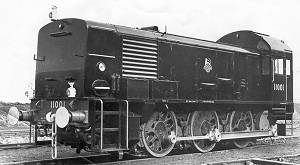 No 11001 was the first diesel locomotive put into service by British Railways. Intended for heavy yard shunting and short-distance transfer and trip working, it was designed under the direction of O V S Bulleid, while he was Chief Mechanical Engineer of Southern Railways. After nationalisation, R A Riddles, Member of the Railway Executive responsible for mechanical and electrical engineering matters, sanctioned the completion of its construction. Paxman was responsible as main contractor for the entire power equipment including the transmission. No 11001 was built in 1949 at Southern Region's Ashford Works in Kent, and introduced in 1950. The prime mover was a 12 cylinder Paxman RPH Series 1 engine, producing 500 bhp at 1,250 rpm. Drive was through a Vulcan Sinclair fluid coupling to an SSS (Synchro-Self-Shifting) Powerflow gearbox which provided three forward and reverse gears in either high or low range. Maximum track speeds in low range were 5, 9 and 15 mph, and in high range 12, 21 and 36 mph. (7) This 0-6-0 locomotive, weighing 49 tons 9 cwts, was withdrawn from service in August 1959 and cut up at Ashford Works in December that year.
No 11001 was the first diesel locomotive put into service by British Railways. Intended for heavy yard shunting and short-distance transfer and trip working, it was designed under the direction of O V S Bulleid, while he was Chief Mechanical Engineer of Southern Railways. After nationalisation, R A Riddles, Member of the Railway Executive responsible for mechanical and electrical engineering matters, sanctioned the completion of its construction. Paxman was responsible as main contractor for the entire power equipment including the transmission. No 11001 was built in 1949 at Southern Region's Ashford Works in Kent, and introduced in 1950. The prime mover was a 12 cylinder Paxman RPH Series 1 engine, producing 500 bhp at 1,250 rpm. Drive was through a Vulcan Sinclair fluid coupling to an SSS (Synchro-Self-Shifting) Powerflow gearbox which provided three forward and reverse gears in either high or low range. Maximum track speeds in low range were 5, 9 and 15 mph, and in high range 12, 21 and 36 mph. (7) This 0-6-0 locomotive, weighing 49 tons 9 cwts, was withdrawn from service in August 1959 and cut up at Ashford Works in December that year.
An interesting feature of the locomotive was that the controls were laid out as for a steam locomotive, there being no engine drivers with any diesel experience at the time.
No 10800 - Prototype Mixed Traffic Type 1 Locomotive
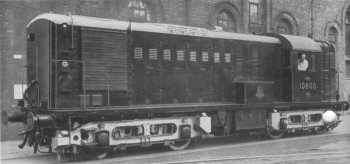 Plans to build this prototype, designed by H G Ivatt, Chief Mechanical Engineer of the LMS Railway, were announced in March 1947. (8) It became British Railways' first diesel-electric mixed traffic locomotive, intended for branch line and cross-country passenger and freight duties. Power was provided by a turbocharged 16 cylinder Paxman RPHXL Series 2 engine, producing 827 bhp at 1,250 rpm, coupled to an 800 kW main generator with a continuous current rating of 1,600 amps at 326 volts. Electrical equipment, including the main generator and traction motors, was supplied by British Thomson-Houston. The control system provided four fixed engine speeds above idling. Built in 1950 by North British Locomotive Co at Glasgow, the locomotive had a maximum design speed of 70 mph, a maximum tractive effort of 34,500 lbs, and weighed 69 tons 16 cwt in working order. (9)
Plans to build this prototype, designed by H G Ivatt, Chief Mechanical Engineer of the LMS Railway, were announced in March 1947. (8) It became British Railways' first diesel-electric mixed traffic locomotive, intended for branch line and cross-country passenger and freight duties. Power was provided by a turbocharged 16 cylinder Paxman RPHXL Series 2 engine, producing 827 bhp at 1,250 rpm, coupled to an 800 kW main generator with a continuous current rating of 1,600 amps at 326 volts. Electrical equipment, including the main generator and traction motors, was supplied by British Thomson-Houston. The control system provided four fixed engine speeds above idling. Built in 1950 by North British Locomotive Co at Glasgow, the locomotive had a maximum design speed of 70 mph, a maximum tractive effort of 34,500 lbs, and weighed 69 tons 16 cwt in working order. (9)
British Railways was sufficiently impressed by the performance of the prototype to order 54 more in 1955 as part of the British Railways 1955 Modernisation Plan. Before any were delivered Paxman introduced the 16 YHXL engine which was used instead of the RPH originally specified. More details of these Class 15 and Class 16 locomotives appear in the YH Traction Applications section below.
No. 10100 - The Fell Experimental Locomotive
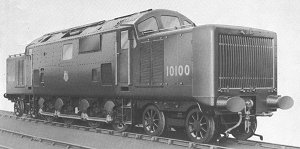 This locomotive was built to the design of H G Ivatt, Chief Mechanical Engineer of the London Midland Region of British Railways, in collaboration with Fell Developments Ltd and Ricardo & Company. Fell Developments was set up by Lt Col L F R Fell who was responsible for the concept and design of the unique engines and transmission arrangements. In the late 1940s the railways faced growing competition from the motor car and airlines offering internal flights. To counter the challenge the railways wanted to offer fast passenger train services between the major cities. Thus the term 'inter-city' was first coined and used with reference to rail travel. Developed for the proposed fast inter-city trains, the Fell locomotive was built at British Railways Derby Works in 1949/50, introduced in January 1951, and remained in service until November 1958.
This locomotive was built to the design of H G Ivatt, Chief Mechanical Engineer of the London Midland Region of British Railways, in collaboration with Fell Developments Ltd and Ricardo & Company. Fell Developments was set up by Lt Col L F R Fell who was responsible for the concept and design of the unique engines and transmission arrangements. In the late 1940s the railways faced growing competition from the motor car and airlines offering internal flights. To counter the challenge the railways wanted to offer fast passenger train services between the major cities. Thus the term 'inter-city' was first coined and used with reference to rail travel. Developed for the proposed fast inter-city trains, the Fell locomotive was built at British Railways Derby Works in 1949/50, introduced in January 1951, and remained in service until November 1958.
Power came from four supercharged 12 cylinder Paxman RPH Series 1 engines, each producing 500 bhp at 1,500 rpm (2,000 bhp in total). The engines were housed under bonnets at each end of the locomotive which had two drivers' cabs, each with a complete set of controls and instruments. Two 150 bhp 9.6 litre AEC auxiliary engines provided the power for driving ancillary equipment including the superchargers, cooling fans for water and oil radiators, gearbox oil pumps and vacuum exhausters. The main drive was through fluid couplings with a system of direct mechanical gearing. With a 4-8-4 wheel configuration, the 'Fell' had a top speed of 78 mph and weighed 116 tons. Use this link to see another photograph of the locomotive. The complexity of the Fell made maintenance time consuming and expensive, and no more were built. A detailed technical description of this prototype and comments by John Cove, who had some involvement with the Fell project while working at Paxman, can be found on the Fell Locomotive page.
In 1955 Fell drew up plans for a 2,300 bhp locomotive of similar design, the highest power single diesel unit in the world at that time. It was designed to be suitable for long distance express passenger trains and heavy freight. The main difference from the original Fell locomotive was that two Paxman 4 RPHs were specified as auxiliaries in place of the AEC engines. This second project did not progress beyond the drawing board.
RPH Engines for Shunters
A major application of 6 cylinder RPH engines was in heavy duty shunters used predominantly in British steelworks. Records show 146 being in service at the end of 1960. The locomotives were built by a number of companies, mainly British Thomson-Houston, Yorkshire Engine Company, North British Locomotive Company, and Ruston & Hornsby, using various transmissions - diesel-mechanical, diesel-hydraulic, and diesel-electric. The shunters normally worked on a twenty four hour cycle and were usually only brought back to the sheds once every seven days for a weekly service and check over.
It is testament to the robustness and longevity of the 6RPH that some shunters fitted with it are still giving good service after more than 40 years. In July 2007 an email arrived from Bruce Knights saying that his company, Knights Rail Services Ltd (KRSL) of Coggeshall, still uses five Ruston & Hornsby shunters, each fitted with a 6RPHL Mk3, for shunting at its Eastleigh Works site.
KRSL's ex-BR class 07 shunter, D2991, was the seventh of a batch of fourteen Ruston & Hornsby LSSE (diesel-electric) type locomotives built for use in the Southampton Docks rail system. Powered by Paxman 6RPHL engines coupled to AEI generators, the class were all allocated to Eastleigh shed from where they were out-stationed at the docks and the adjacent Railway Works as required. D2991 was built in 1962 (works number 480692) and still has its original engine. Allocated to Eastleigh when it first entered service, D2991 was in the Works in 1973 and was used to provide back up power during the miners' strike. When the strike ended the shunter remained on site and has been booked solely as Works shunter ever since. KRSL uses it daily to shunt trains around the Works, one of the duties for which it was originally built. D2991 holds the record for the longest time an ex-BR engine has been at its original location. KRSL took over the Works from Alstom in 2007 and purchased the, by now, very rusty shunter. There had been no servicing since about 1980 and it is a credit to Paxman that the engine works so well. For six months it was the company's only shunter, in use for up to 50 hours per week. Mr Knights comments that it would benefit from a top end overhaul but is still in daily commercial use.
There are no plans to retire D2991 which has been so successful that KRSL has purchased four similar locomotives from the Ministry of Defence. These Ruston & Hornsby type LSSH (diesel-hydraulic) shunters were Army numbers 422, 425, 428 and 433, the last having spent much of its working life at MOD Shoeburyness in Essex. Built in 1961/2, they were in service with the MOD until May 2007. KRSL has moved them to Eastleigh Locomotive Works where they are now in daily use as yard shunters for the 150 stored rail vehicles there. Mr Knights says the locomotives were serviced very well by the MOD although they did suffer from regular starter motor burnouts in the latter days as they were not used regularly and consequently took a lot of turning over to make them fire up.
Don Meiklejohn, Technical Support Engineer at Paxman, says the Ruston LSSH shunters appear to be one of these designs that keeps on going. They had a simple mechanical transmission with a torque converter so it was very much a case of overhaul it and change a few worn parts and it was good for a number of years more. He says other designs, with electrical transmissions, built at the same time can be more difficult to support as a lot of electrical components are no longer obtainable due to their manufacturers going out of business years ago. Don believes other LSSH shunters are still running elsewhere, for example some at a steel works in Portugal. These shunters were nearly all sold to industrial customers so most that were scrapped were so when the plant they were running at was shut down or ceased to have its own rail system which required the use of a shunter.
The normally aspirated 6RPHL engines in shunters proved to be very reliable even with minimal maintenance. They could tolerate the long periods of idling inherent in this type of duty but were capable of working hard when required. They were much more durable than smaller (and often cheaper) turbocharged engines. Weight is not normally a problem with shunters as they often have to be ballasted with concrete to increase their weight and improve adhesion so that they can shunt longer or heavier trains.
RPH Rail Traction Engines for Export
The table below gives details of some of the 12 cylinder RPH engines, supplied for locomotives for overseas railways, which entered service between 1951 and 1959.
| Quantity | Customer | Transmission | Locomotive Builder |
|---|---|---|---|
| 4 | Peruvian State Railways | d-mechanical | Hunslet Engine Co |
| 6 | Norwegian State Railways | d-hydraulic | |
| 8 | Ceylon Government Railways | d-electric | North British Loco Co |
| 3 | East African Harbours | d-hydraulic | North British Loco Co |
| 2 | Bancroft Copper Mines, N Rhodesia | d-hydraulic | North British Loco Co |
| 1 | Emu Bay Railway, Tasmania | d-hydraulic | North British Loco Co |
| 2 | Iron & Steel Corp., S Africa | d-mechanical | Hudswell Clarke & Co |
| 2 | N'Changa Copper Mines, N Rhodesia | d-hydraulic | North British Loco Co |
| 1 | Mufulira Copper Mines, N Rhodesia | d-mechanical | Hunslet Engine Co |
| 2 | Mauritius Railway | d-hydraulic | North British Loco Co |
| 2 | Niger Delta Project | d-hydraulic | North British Loco Co |
| 14 | Ghana Railways (13 locos; ordered 1955.) | d-electric | Birmingham Coach & Wagon |
| 20 | Western Australian Railways 18 Western Australian Y class | d-electric; | Clayton Equipment Co for British Thomson-Houston |
| 25 | Western Railway of India (20 locomotives + spare engines. Locos ordered 1953; delivered 1955.) | d-hydraulic | North British Loco Co |
| 21 | New South Wales Government Railways Ten NSW 41 Class - twin engine | d-electric | Metropolitan Cammell for British Thomson-Houston |
Other export orders included fourteen 8RPHs for diesel-hydraulics built by North British Locomotive Company for East African Railways (83 Class; entered service 1955-56), and two 16RPHXs for diesel-electrics built by Metropolitan Vickers for Argentine State Railways. 6RPH engines were supplied to Bolivia (2), Malaya (8), Madras Port Trust (4), Bengal and Portugal. Further details of some of these locomotives can be found on the Paxman Diesels for the World's Railways page.
8RPHL engines, with a 302 bhp rating at 1,500 rpm, were supplied for a further fifteen diesel-hydraulic locomotives for East African Railways and Harbours. These metre gauge 0-6-0 locos were built by Andrew Barclay Sons & Co of Kilmarnock (Nos 563 - 577) and equipped with Voith L320V transmissions. The first was shipped to East Africa in 1972, and the batch given EAR numbers 3501 - 3515.
During the 1970s Paxman received orders for at least fifty three 8RPHL engines for Nigeria. These were for forty seven diesel-electric 0-6-0 locomotives built by Brush of Loughborough, with six spare engines. Although designed for marshalling and shunting, many were employed on mixed traffic duties. Twenty two of the locomotives, Brush numbers 728 - 749, were ordered in 1972 by Nigerian Railways. These became Nigerian Railways 921 - 942. A follow-on order for twenty similar locomotives, Brush numbers 780 - 799, was placed in 1976. They became Nigerian Railways 951 - 970. Another locomotive of this type was ordered in 1977, Brush number 800, for the Ashake Cement Co. The remaining four locomotives, for which Paxman received the engine orders in late 1979, were built for Kaduna Oil Refinery in Nigeria.
Paxman supplied 8RPHL (328 bhp) engines, plus one spare, for twenty locomotives built by Brush for Tanzania. Similar to the Nigerian locomotives described above, the first of these Tanzanian Railways Class 36 was built in 1979.
Northern Rhodesia (now Zambia) Copperbelt Locomotives
N'Changa Copper Mines: Two 12RPHXL Series 2 engines, Serial Nos. 300003/13 and /14, despatched March 1955, were supplied for two North British 0-8-0 diesel-hydraulic locomotives for N'Changa. They were de-rated from their usual 625 bhp rating to 546 bhp at 1,250 rpm for the local high altitude (4,300 feet) and ambient temperature (95° F) conditions. Numbered N'Changa No. 6 and No. 7, it is believed the locomotives were transferred to Bancroft Mines circa 1969-71.
Bancroft Copper Mines: Two 12RPHXL Series 2 engines, Serial Nos. 300013/3 and /4, despatched January 1956, were supplied for two North British 0-8-0 diesel-hydraulic locomotives for Bancroft. Numbered Bancroft No. 1 and No. 2, their engines had the same rating as those installed in the N'Changa locomotives described above.
Mufulira Copper Mines: A 12RPHL Series 2 engine, Serial No. 300003/50, despatched September 1955, was supplied for a 56 ton Hunslet 0-8-0 diesel-mechanical locomotive for Mufulira. The engine was de-rated from its usual 500 bhp rating to 440 bhp at 1,250 rpm for the local high altitude (4,000 feet) and ambient temperature (95° F) conditions. The locomotive was fitted with a Hunslet two-speed automatic gearbox.
Rhokana Copper Mine: Four 6RQE engines, rated 100 bhp at 1,250 rpm, are thought to have been supplied for 3' gauge North British 'Miner' 0-4-0 locomotives for underground duties at Rhokana. Two of these arrived in 1948 and the second two in 1954/5. The first two may have been fitted originally with North British hydraulic transmissions and re-fitted with Voith hydraulic transmissions.
Nkana Copper Refinery: The August 1954 issue of Diesel Railway Traction (p.195) noted that 'One of the Paxman-engined North British Miner flameproof underground diesel locomotives built by the North British Locomotive Co Ltd was recently fitted with a "tropical cab," comprising a roof but no sides, for use entirely on surface duties at Nkana Copper Refineries in Northern Rhodesia. It weighs 15 tons, has a top speed of 12½ mph and a starting tractive effort of 8,400 lb. The Voith-North British type of hydraulic transmission is embodied.' It seems likely that this locomotive was North British Order No L40, Works No 27416, a 3' 6" gauge locomotive built in 1954, and that it had the 6RQE engine which Paxman records show as being supplied to the North British Locomotive Co in mid-1953 for a shunting locomotive for "Rhodesian Copper Refineries". The records specifically mention that this engine was for a surface-based shunting locomotive, not an underground one, and that it was not flameproofed. It had a continuous rating of 100 bhp at 1,250 rpm, and a 1-hour rating of 110 bhp at 1,250 rpm.
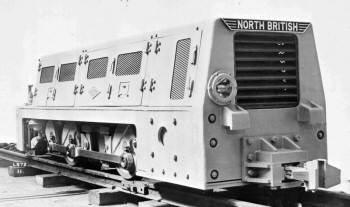 North British 'Miner' Locomotives
North British 'Miner' Locomotives
During the 1940s and 1950s the North British Locomotive Co (NBL) built a number of small compact 0-4-0 locomotives, specially designed for use in underground mines. For some of these North British 'Miners', Paxman supplied its 6-cylinder RQE engine, rated at 100 bhp at 1,250 rpm and fully flameproofed for underground working. (NBL also built Miners with Crossley 100 bhp 5BWL engines and Leyland 75 bhp AU 350/16 engines.) The Paxman-engined Miner had a maximum weight of 15 tons, a maximum axle load of 7.5 tons, a maximum tractive effort of 8,400 lbs at 25% adhesion, and a maximum speed of 15 mph. Some 6RQE engines for Miners were fitted with Metalastic couplings to drive an SLM gearbox. Others were supplied suitable for driving a fluid coupling connected to a Wilson gearbox.
Thirteen 6RQEs were despatched to NBL in 1948 for Miner locomotives, several of which were supplied to National Coal Board collieries in northeast England. A further seven 6RQEs were supplied to NBL in late-1953 for mine locomotives. These were 'standard build' industrial engines which Paxman happened to hold in stock. It is not recorded whether, after despatch, they were converted to flameproofed types but this seems likely. (End-users cannot easily be identified as Paxman's RQ records have not survived.)
In addition, a non-flameproofed 6RQE was supplied for a locomotive for Rhodesian Copper Refineries, as explained above.
Hi-Dyne (constant horsepower) Engines
The 'Hi-Dyne' engine was developed for diesel-mechanical rail traction. Diesels normally produce their maximum power at full engine speed and proportionally less power at lower rotational speeds. In rail traction the need is for high power at low track speeds to provide good acceleration when moving off and to maintain speed on rising gradients. This is not a problem with diesel-electric and diesel-hydraulic transmissions which allow engines to be run at high rotational speeds over the full range of track speeds, making maximum power available even at the lower end of the range. They are, however, more complex and expensive, and less efficient, than a diesel-mechanical transmission.
The Hi-Dyne was designed to produce the same or similar power output throughout its engine speed range. The aim was to achieve increased torque as engine speed decreased thus giving the ideal tractive effort curve and making it practical to replace electric and hydraulic transmissions with relatively simple mechanical gearboxes. To achieve the 'constant horsepower' characteristic the quantity of fuel and air fed into each cylinder had to be increased as engine speed decreased. Fuelling was controlled by a modified form of simple fly weight governor linked to the fuel control rod. The force exerted by the governor was varied by the throttle lever which determined the available power output, not the speed of the engine. The latter varied according to the tractive resistance (load) within the operating speed range for the engine, whatever the throttle position. The main challenge was to feed sufficient air into the cylinder at low speeds for proper combustion of the increased fuel. The solution adopted in the Hi-Dyne engine was to use a turbocharged engine with the turbocharger matched to give a high rate of air flow at the lowest engine speed. (10)
A Hi-Dyne was installed in a 48 ton 0-6-0 experimental shunter 'Enterprise', built by Hudswell, Clarke & Co of Leeds in 1954. During the latter part of that year it was worked at various collieries and industrial sites (11). The engine in this prototype was a 6 cylinder Vee form RPHXL Series 1 fitted with a Brown Boveri VTR 160 turbocharger and a special governor to give a constant power output of 210 bhp between 735 and 1,250 rpm. Transmission was through a three speed Dual Fluidrive gearbox with a pair of fluid couplings directly connected to the engine. Although the Hi-Dyne could be used with any normal type of mechanical gearbox, Paxman favoured the fluidrive system because it overcame a major drawback of the conventional gearbox: the momentary loss of power whilst changing gear. Paxman subsequently supplied Hi-Dyne engines for twenty four 2-8-2 mixed traffic locomotives for Sierra Leone Government Railway. Built by Hudswell Clarke between 1958 and 1961, these locomotives were fitted with engines based on Paxman's 6-cylinder YHXL Mk 3, not the 6RPHXL installed in 'Enterprise'. A fuller history of the Hi-Dyne, and the locomotives in which it was installed, can be found on the Hi-Dyne page.

Representatives of Paxman and Regulateurs Europa with Enterprise on test on the old Stockton - Darlington
line circa 1956. Tests were carried out using a dynamometer car and a load comprising forty 40-ton coal trucks
on which the brakes were adjusted to control drawbar load.
YH Traction Applications
The YH was developed from the RPH engine and had the same 7" bore. The main innovations were direct fuel injection, individual cylinder heads, and four valves per cylinder. Between 1957 and 1960 Paxman supplied fifty six turbocharged 16 cylinder YHXLs for the 54 Bo-Bo locomotives based on the 10800 prototype mentioned above. The normal traction rating of the 16YHXL was 1,000 bhp at 1,250 rpm but for this application it was set conservatively to develop 800 bhp at 1,250 rpm. British Thomson-Houston of Rugby built the forty four Class 15 locomotives (D8200 - D8243) between 1957 and 1961, and these had a starting tractive effort of 37,500 lbs. The ten Class 16 locomotives (D8400 - D8409) were built by North British Locomotive Company at Glasgow in 1958 and had a starting tractive effort of 42,000 lbs. Both classes had a top speed of 60 mph and weighed 68 tons.
Twenty five 6-cylinder YHXL 'Hi-Dyne' engines were supplied for 24 locomotives built by Hudswell Clarke for Sierra Leone Government Railways (see Hi-Dyne section above). One engine was a spare, and two conventional 6YHXL engines were later supplied as replacements. These were the only 6-cylinder YH engines ever supplied for rail traction duty.
In 1967/68 Paxman received orders from the Brush Electrical Engineering Company of Loughborough for a total of thirty six 12 cylinder YHXL Mk 4 engines for export to Cuba. Up to this time Cuba's diesel locomotives were powered by American engines. In 1960 the US imposed a partial embargo on trade with Cuba which became a full embargo in 1961, the year before the Cuban missile crisis. Consequently Cuba was unable to source spares or engines from the US so it turned to the UK. Orders for twenty eight 12YHXLs were placed on 10th April 1967. Paxman Order Nos 59430 to 59435 were for six engines to replace ALCO engines fitted in General Electric (USA) locomotives. Paxman fitted the engines to sub-frames which were supplied by Brush on free issue along with the generators. These engines were rated 825 bhp at 1,400 rpm and were despatched from Colchester between December 1967 and March 1968. Order Nos 59436 to 59450 covered fifteen engines to re-engine General Electric (USA) built locomotives and were despatched by Paxman between March and July 1968. These, and all the remaining 12YHXLs supplied for Cuba, sat on a Brush supplied sub-frame and were rated at 720 bhp at 1,200 rpm. Order Nos 59451 to 59457 were for seven engines for new 3'0" gauge Brush Class S1 locomotives ordered by MINAZ, the Cuba sugar ministry. The locomotives were allocated Brush works numbers 712 to 718. The final orders, Nos 59925 to 59932, were placed on 27th June 1968 and were for engines for a further eight Class S1 locomotives for MINAZ which were allocated Brush works numbers 720 to 727. These engines were despatched from Colchester between January and April 1969.
ZH Traction Applications
Introduced in 1954, the ZH was a horizontal or 'flat' 6 in-line cylinder engine. Evolved from the YH, in essence half (i.e. one bank) of a Vee 12 YH, the ZH was designed for British Railways as an under-floor mounted power unit for railcars. In a collaborative venture involving British Railways, British Thomson-Houston and Paxman, an experimental high speed diesel-electric railcar train was built in 1956. Two 1926 passenger coaches due for scrapping were each modified to take an under-floor mounted pressure-charged 450 bhp ZH driving a flange mounted BTH generator. The two coach train had a maximum permitted speed of 85 mph and weighed 103 tons. Over 17 months of testing the train performed well with negligible defects and no significant engine wear.
Paxman was not successful in obtaining a slice of the British Railways business for underfloor railcar engines, possibly because the ZH was larger, and its power output substantially greater, than the engines developed by competitors for this application. As previously mentioned, part of the first phase of the British Railways Modernisation Plan announced in January 1955 was the ordering of about 1,000 diesel-engined railcars. The largest number of engine orders for these went to Leyland, followed by AEC and then Rolls Royce.
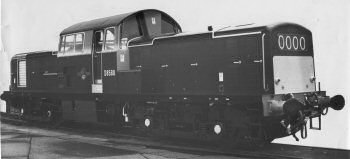 Subsequently the ZH engine was adopted by British Railways for something quite different, the Class 17 'Clayton' Type 1 diesel-electric locomotive. Two turbocharged 6ZHXL engines, each developing 450 bhp at 1,500 rpm and driving a single bearing tandem generator, were mounted above the locomotive frame. The low height of the engine (33") gave the driver in his central cab exceptional visibility. 243 engines (including 9 spare ones) were supplied for the 117 Class 17s which had a design speed of 60 mph and weighed 68 tons. 88 of the locomotives were built by the Clayton Equipment Company, and the remaining 29 by Beyer Peacock of Gorton, Manchester. After an initial period these locomotives were used for freight and passenger services in the Scottish Region.
Subsequently the ZH engine was adopted by British Railways for something quite different, the Class 17 'Clayton' Type 1 diesel-electric locomotive. Two turbocharged 6ZHXL engines, each developing 450 bhp at 1,500 rpm and driving a single bearing tandem generator, were mounted above the locomotive frame. The low height of the engine (33") gave the driver in his central cab exceptional visibility. 243 engines (including 9 spare ones) were supplied for the 117 Class 17s which had a design speed of 60 mph and weighed 68 tons. 88 of the locomotives were built by the Clayton Equipment Company, and the remaining 29 by Beyer Peacock of Gorton, Manchester. After an initial period these locomotives were used for freight and passenger services in the Scottish Region.
In service, major problems arose with cracking of the cast aluminium engine frame and the engines had to be rebuilt by Paxman with cast iron frames, at great cost to the Company. John Cove, who worked for Paxman at the time, has told me that British Railways had previously tested the first pair of engines with aluminium crankcases before placing an order for a quantity. By that time Paxman had had some experiences with aluminium castings on the YHA and possibly also the YGA air-cooled engine. Both types had experienced troubles with threads and failures in cast aluminium. John went on to say: "Consequently we suggested to BR that we supply the engines with cast iron crankcases from the start but BR were quite adamant that they wanted the engines to be exactly the same as the ones they had tested and which had given no trouble. We were so keen to get the order that we failed to stand up for what we believed was necessary and so supplied them in aluminium. But before long these engines in service had run longer hours than the test engines and troubles began to become apparent and we had to change all the crankcases to iron. The troubles then ceased but this would have been unnecessary if we had taken a stronger line before the order was placed."
The Class 17 locomotives were largely used on coal trains where the originally installed light aluminium-framed ZH engines put them at a disadvantage as they lacked the weight to stop the trains. The Class 17s were made obsolete firstly by the gradual closure of all the smaller coal mines and secondly by the introduction of "merry-go-round" coal trains which ran from pit to power station using larger braked wagons which could be automatically loaded and emptied. These new trains required larger and more powerful locos to haul them.
Because the Class 17 was not a standard design, and to simplify maintenance, all were withdrawn from British Rail service by the end of December 1971. One locomotive, D8568, was sold to Hemelite Ltd of Hemel Hempstead who manufactured concrete products. Hemelite later sold it on to the Ribblesdale Cement Co at Clitheroe. As at 2019 D8568, the only surviving example of the class, is in preservation at the Chinnor and Princes Risborough Railway. The remaining 116 locos were all scrapped by the mid-1970s except two that were retained by BR until the late 1970s for departmental use.
YL Traction Applications
Although it has been said the YL, introduced in 1951, was 'at the beginning designed specially for rail traction' (12), it was not installed in any British locomotive. British Railways considered the YL too heavy for locomotives operating on the UK rail network. The only rail traction customer for the YL was Italian State Railways (FS - Ferrovie dello Stato). All the YL engines supplied to this customer were built under licence by Fabbrica Automobili Isotta Fraschini e Motori Breda of Milan, not by Paxman at Colchester.
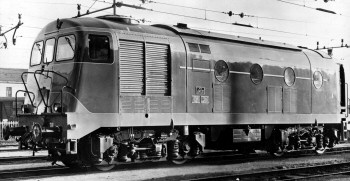 The Autumn 1955 issue of Paxman's World announced that the YL was to be manufactured in Italy by Breda which had just received an Italian State Railways contract for two locomotives with 12 cylinder engines. The two D.341 Class locomotives, Nos D.341.2001 and D.341.2002, were constructed c.1957-59 and fitted with 12 YLXL (turbocharged) engines, rated 1,320 bhp at 1,000 rpm. The first of these entered service during November 1958.
The Autumn 1955 issue of Paxman's World announced that the YL was to be manufactured in Italy by Breda which had just received an Italian State Railways contract for two locomotives with 12 cylinder engines. The two D.341 Class locomotives, Nos D.341.2001 and D.341.2002, were constructed c.1957-59 and fitted with 12 YLXL (turbocharged) engines, rated 1,320 bhp at 1,000 rpm. The first of these entered service during November 1958.
Right: The first Paxman-engined D.341 Class locomotive, No 2001, in December 1958.
There is some ambiguity about the number of YL engines Breda built for the D.341.2000 series of locomotives. On page 236 of the Paxman Sales Engineers' Handbook there is a picture of D.341.2001 with a caption which starts: "Following the granting of a licence to build YL engines in Italy the firm of Fabbrica Automobili Isotta Fraschini e Motori Breda received an order to supply 32 diesel-electric locomotives of the type illustrated above … ." Another part of the caption reads: "Each locomotive is powered by a 12YLXL engine built by Breda in Italy, having a site rating of 1,400 bhp at 1,000 rpm." However, an Italian book states that the first two locomotives, Nos D.341.2001 and D.341.2002, had 12YLXL engines with ratings of 1,320 bhp at 1,000 rpm. The same book records that the other D.341.2000 series locomotives were Nos D.341.2003 to D.341.2035, which had 12YLXL engines rated 1,400 bhp at 1,000 rpm and were built between 1960 and 1963. Assuming this is correct, Breda built 33 of the 1,400 bhp 12YLX engines (discounting any spares), as well as the two 1,320 bhp ones, making a total of 35 rather than the 32 implied in the photograph caption. The water is further muddied by the fact that the table on page 204 of the Sales Engineers' Handbook, based on information available up to 31st December 1966, only mentions 20 of the 1,400 bhp YLX engines built by Breda. In a recorded interview an ex-Paxman man, who had been responsible for licensing arrangements, said that Paxman found Breda had made more engines than agreed in their licence. One wonders if the number of twenty 1,400 bhp engines given on page 204 was based on the number for which a licence that had been granted, or whether the discrepancies on pages 204 and 236 are just down to human error on the part of the Handbook's compilers.
The D.341 Class locomotives were for passenger and freight (mixed traffic) duties, weighed 64 tons, and had a maximum speed of 62 mph. They operated in the Taranto-Bari area where the track rose to 1,000 feet above sea level and gradients of over 1 in 65 were encountered. (13)
Subsequently Breda built twenty 12YLCL (turbocharged and intercooled) engines, rated 2,000 bhp at 1,000 rpm, for twenty D.443 Class locomotives constructed in 1966-68. Like the D.341 Class, the locomotives D.443.2001 to D.443.2020 were diesel-electric.
Breda also built 37 Paxman Venturas under licence for Italy's FS Class D.343 diesel-electric locomotives - see Ventura Traction Applications below.
Major Engine Supplier to OEMs (Original Equipment Manufacturers)
By the 1960s Paxman had supplied diesel engines not only to British Railways but to many of the best known British locomotive builders including North British Locomotive Co Ltd of Glasgow, Hudswell Clarke and Co of Leeds, British Thomson-Houston Company at Rugby, Clayton Equipment Company of Derby, Hunslet Engine Company of Leeds, and Yorkshire Engine Company of Sheffield.
Ventura (YJ) Traction Applications
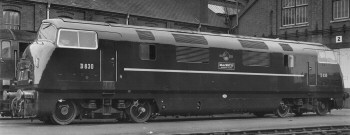 The Ventura or YJ was a highly successful engine in rail traction applications. It marked another advance in power output producing 50% more power than its predecessor, the YH, from the same sized package. Test running of a development prototype commenced in 1958. The first YJ engines despatched from the factory, a pair of field trial engines, were installed in the British Railways Type 4 Warship Class main line locomotive, 'Majestic' D830 (pictured right). From a Work Bulletin we know the engines were being trialled in Majestic, a diesel-hydraulic locomotive operated on the Western Region, during early 1961. The two 12YJXLs each developed 1,200 bhp at 1,500 rpm.
The Ventura or YJ was a highly successful engine in rail traction applications. It marked another advance in power output producing 50% more power than its predecessor, the YH, from the same sized package. Test running of a development prototype commenced in 1958. The first YJ engines despatched from the factory, a pair of field trial engines, were installed in the British Railways Type 4 Warship Class main line locomotive, 'Majestic' D830 (pictured right). From a Work Bulletin we know the engines were being trialled in Majestic, a diesel-hydraulic locomotive operated on the Western Region, during early 1961. The two 12YJXLs each developed 1,200 bhp at 1,500 rpm.
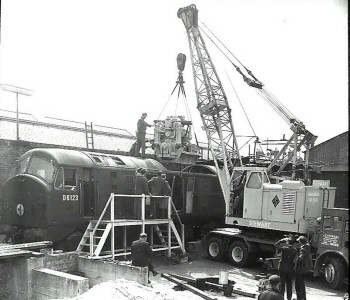 In 1962 British Railways ordered twenty one 12 cylinder YJXLs for re-engining some Scottish Region Type 2 diesel-electric locomotives. These had been fitted originally with 1,100 bhp engines, designed by MAN but built by the North British Locomotive company under licence. The engines had proved unreliable in service and were de-rated to 1,000 bhp and then to 900 bhp. The Ventura replacement was rated at 1,350 bhp, transforming the locomotives' performance. The first of the locomotives to be re-engined, Number D6123, was brought into Paxman's Britannia Works at St Botolph's in 1963. The work was done by Paxman Development Engineers who devised a procedure for the task.
In 1962 British Railways ordered twenty one 12 cylinder YJXLs for re-engining some Scottish Region Type 2 diesel-electric locomotives. These had been fitted originally with 1,100 bhp engines, designed by MAN but built by the North British Locomotive company under licence. The engines had proved unreliable in service and were de-rated to 1,000 bhp and then to 900 bhp. The Ventura replacement was rated at 1,350 bhp, transforming the locomotives' performance. The first of the locomotives to be re-engined, Number D6123, was brought into Paxman's Britannia Works at St Botolph's in 1963. The work was done by Paxman Development Engineers who devised a procedure for the task.
Left: The 12-cylinder Ventura engine being installed in D6123 at Britannia Works in 1963.
Re-engining of at least some the remaining twenty locomotives was then undertaken at the Scottish Region's St Rollox Works, Springburn, Glasgow, in 1964 or 1965. Later support for these locomotives was carried out at Inverurie Works, just North of Aberdeen. Originally Class 21 locomotives they were re-designated Class 29 after being fitted with the Paxman engines. They had a top speed of 75 mph and weighed 72 tons.
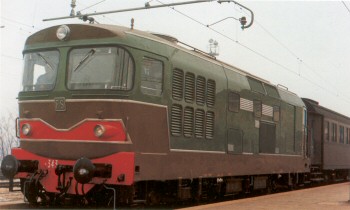 A major overseas customer was Ceylon (now Sri Lanka) Government Railways which ordered 82 Venturas. Deliveries commenced in 1968, the first eight 12 cylinder engines being for a re-engining project. Another forty five 12YJXLs (1,150 bhp) were for Class II diesel-hydraulic mixed traffic locomotives built by Rheinstahl Henschel at Kassel, West Germany. Fifteen 16YJXL (1,580 bhp) engines were for Class III diesel-hydraulic locomotives, for hill section working, built by LKM (Lokomotivebau Karl Marx) at Babelsberg, East Germany. Four 8 cylinder, and ten 12 cylinder Venturas were for Hitachi built locomotives. Motori Breda of Milan built 37 Venturas under licence for 35 Italian State Railways D.343 Class diesel-electric locomotives, Nos D.343.2001 to D.343.2035. The Breda-built 12YJCL engines were rated 1,350 bhp at 1,500 rpm.
A major overseas customer was Ceylon (now Sri Lanka) Government Railways which ordered 82 Venturas. Deliveries commenced in 1968, the first eight 12 cylinder engines being for a re-engining project. Another forty five 12YJXLs (1,150 bhp) were for Class II diesel-hydraulic mixed traffic locomotives built by Rheinstahl Henschel at Kassel, West Germany. Fifteen 16YJXL (1,580 bhp) engines were for Class III diesel-hydraulic locomotives, for hill section working, built by LKM (Lokomotivebau Karl Marx) at Babelsberg, East Germany. Four 8 cylinder, and ten 12 cylinder Venturas were for Hitachi built locomotives. Motori Breda of Milan built 37 Venturas under licence for 35 Italian State Railways D.343 Class diesel-electric locomotives, Nos D.343.2001 to D.343.2035. The Breda-built 12YJCL engines were rated 1,350 bhp at 1,500 rpm.
Photo: Italian Railways, Class 343
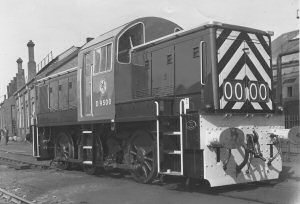 Seventy four 6 cylinder Venturas were produced for British Railways. Eleven were for electro-diesel locomotives on the Southern Region - Class 74. Electro-diesels were primarily electric locomotives drawing power from a third rail, complemented by diesel traction for working on non-electrified sections of track. The remaining sixty three 6 cylinder YJXLs were purchased in 1963 for a Western Region Class 14 Type 1 diesel-hydraulic locomotive. The 50 ton locomotive for shunting and freight transfer duties, with a maximum speed of 40 mph, had three axle (Voith) hydraulic transmission. Designed and built at Western Region's Swindon Works, it was introduced into service in October 1964. The turbocharged engines were flexibly supported on Metalastic mountings and had a rating of 650 bhp at 1,500 rpm. Fifty six of these 0-6-0 Class 14 locomotives were built between 1963 and 1965. Some were later sold on to the National Coal Board and to British Steel at Corby. Among those now in preservation is D9516 which has been in service at Didcot Railway Centre since 2014. Also in preservation is No 9529 which was rescued and moved to the Nene Valley Railway in 2010 where it is used for passenger services as well as shunting and civil engineering trains.
Seventy four 6 cylinder Venturas were produced for British Railways. Eleven were for electro-diesel locomotives on the Southern Region - Class 74. Electro-diesels were primarily electric locomotives drawing power from a third rail, complemented by diesel traction for working on non-electrified sections of track. The remaining sixty three 6 cylinder YJXLs were purchased in 1963 for a Western Region Class 14 Type 1 diesel-hydraulic locomotive. The 50 ton locomotive for shunting and freight transfer duties, with a maximum speed of 40 mph, had three axle (Voith) hydraulic transmission. Designed and built at Western Region's Swindon Works, it was introduced into service in October 1964. The turbocharged engines were flexibly supported on Metalastic mountings and had a rating of 650 bhp at 1,500 rpm. Fifty six of these 0-6-0 Class 14 locomotives were built between 1963 and 1965. Some were later sold on to the National Coal Board and to British Steel at Corby. Among those now in preservation is D9516 which has been in service at Didcot Railway Centre since 2014. Also in preservation is No 9529 which was rescued and moved to the Nene Valley Railway in 2010 where it is used for passenger services as well as shunting and civil engineering trains.
Photo: Western Region Class 14 - D9500. Built at Swindon in 1964.
The Deltic Engine and Deltic Locomotives
Not a Paxman engine, the Deltic nevertheless has a place in Paxman's history. The Deltic was designed originally by the highly respected engineering company of D Napier & Son Ltd, of Acton, London. After the war Napier was asked by the Admiralty to design a diesel engine for fast naval patrol boats using German technical concepts. Development work commenced in 1947 and the first unit was completed in March 1950. When English Electric needed a relatively light but powerful diesel for high speed rail traction they decided to use the Napier engine. The prototype Deltic locomotive was built in 1954 and launched in October 1955. In 1957 British Railways placed an order for twenty two Class 55 Deltic locomotives (Nos D.9000 to D.9021) which were delivered between March 1961 and March 1962. Each weighed 99 tons in working order and was powered by two 18 cylinder two stroke Napier D18-25B units, each rated at 1,650 bhp at 1,500 rpm. In the 1960s they hauled the fastest trains in Britain at their normal top operating speed of 100 mph on the East Coast Main Line and remained in service until being displaced by the High Speed Train in the late 1970s.
The main Paxman link is that in 1966 Paxman became part of English Electric which had acquired Napier in 1942. In 1968 English Electric and its constituent companies, including Napier and Paxman, were absorbed into GEC. At that time Deltic design and development work was done on Napier's Acton site and the engines were built on the English Electric/Napier Liverpool site at Gilmoss on the East Lancashire Road. As part of a subsequent re-organisation the Deltic Division of D Napier & Son Ltd was integrated with the Paxman Engine Division of English Electric Diesels Ltd. Design and manufacture of the Deltic engine were transferred to Colchester in 1970 and the first Colchester built Deltic engine was despatched from the factory in 1972. Another Paxman connection with the Deltic is through its sister company, Ruston, which for many years was based at Vulcan Works, Newton-le-Willows, where the production Deltic locomotives were built. Vulcan Works, formerly the renowned Vulcan Foundry, had a long history of locomotive building. Founded in 1830, it sold its first locomotive ('Tayleur') in 1833.
The last new Deltics to be manufactured by Paxman were probably five engines ordered by the Royal Navy in 1982. In the Nov/Dec 1982 issue of Paxman World it was reported that this order would extent production through to the end of 1984. After the mid-1980s repair and overhaul of Deltics continued to be a regular and important part of the Paxman business up until 2002. Typical of this work was the complete strip down, rebuild, and retest of 9 cylinder Types 9-59K and 9-55B for the Royal Navy's Hunt Class minesweepers. In the rail traction field a small number of preserved Deltic locomotives remain in working order and in 2000/2001 four 18 cylinder engines from two of these were returned to Colchester for partial or complete overhaul.
Illustrations of, and detailed information about, these remarkable engines and locomotives appear on a number of good websites maintained by enthusiasts.
The Valenta and The High Speed Train (HST aka The Intercity 125)
One of Paxman's greatest achievements in the field of rail traction was the success of its engines in the High Speed Train (HST), known to many as the Intercity 125. British Rail's decision in the 1960s to build trains capable of operating at 125 mph posed major technical challenges. The power required for a train to travel at 125 mph is twice that needed to travel at 100 mph, the top speed of the fastest passenger expresses in the late 1960s. The loading gauge on the rail network determines the maximum width and height of any locomotive and therefore the maximum dimensions of any diesel engine inside it. This is not as generous as might first appear as there must be sufficient space round the engine to provide access for maintenance and repairs. One way of increasing power output within these restrictions is to build a longer engine with more cylinders, although there are practical limits to length, particularly for a high speed engine. The second alternative, used quite frequently at that time, is to install two engines in a locomotive. The problem with both these solutions is the heavier weight and axle loading of the locomotive. This is critical because heavy axle loadings at speeds over 100 mph lead to substantial track damage necessitating repairs which are both expensive and disruptive.
The ingenious solution was to put an engine in a power car at each end of the train, thus spreading the weight and keeping axle loadings within acceptable limits for the much higher operating speed. This arrangement offered other important advantages. In the event of engine failure in one power car, the other can provide sufficient power for the train to continue its journey at up to 100 mph (as mentioned above, the power required for 125 mph is twice that required for 100 mph). Moreover, the need to turn a locomotive round for a return journey is eliminated - the driver just has to walk along to the cab at the other end of the train.
In August 1970 the British Rail Board's Investment Committee authorised the expenditure of £800,000 on the design, development and construction of a prototype High Speed Diesel Train. At the time Paxman had just embarked on development of its Valenta engine. This engine in its 12 cylinder form, as fitted to the HST, was rated at 2,250 bhp compared with the 1,200 bhp rating of the first 12 cylinder Venturas (its immediate predecessor) delivered for rail traction. The first two engines for the prototype HST were delivered in the Spring of 1972, the year the Valenta was formally launched on the market. The prototype HST itself was completed in May and started running the same year. A full Intercity 125 service was introduced in 1976 on British Rail's Western Region. Trial running on the Eastern Region commenced in autumn 1977. A limited service on the East Coast Main Line began on 8th May 1978, with a full service being introduced in May 1979.
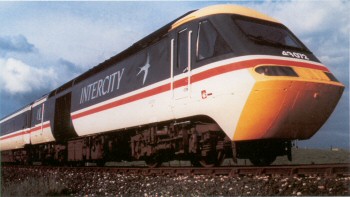 The total weight of an HST trainset, was a little over 350 tons. Each power car weighed 68 tons. The 2,250 bhp 12RP200 Valenta engine drove a flange mounted Brush 1480kW 1,500 volt traction alternator, a 480kW 850 volt train-supply alternator and a 33kW 110 volt power car auxiliaries alternator. The AC traction current was supplied to silicon rectifiers, from which the DC current was directed via switchgear to the DC traction motors. 197 of these Class 43 power cars were built at British Rail's Crewe Works between 1975 and 1982. More than 230 Valenta engines were supplied for the HST and despite the very demanding environment they were able to operate for 20,000 hours between major overhauls. The HST was the only diesel-electric system in the world regularly operating at speeds of up to 125 mph. Under normal operating conditions, each power car travelled more than 1,000 miles in the course of an average 16 hour working day.
The total weight of an HST trainset, was a little over 350 tons. Each power car weighed 68 tons. The 2,250 bhp 12RP200 Valenta engine drove a flange mounted Brush 1480kW 1,500 volt traction alternator, a 480kW 850 volt train-supply alternator and a 33kW 110 volt power car auxiliaries alternator. The AC traction current was supplied to silicon rectifiers, from which the DC current was directed via switchgear to the DC traction motors. 197 of these Class 43 power cars were built at British Rail's Crewe Works between 1975 and 1982. More than 230 Valenta engines were supplied for the HST and despite the very demanding environment they were able to operate for 20,000 hours between major overhauls. The HST was the only diesel-electric system in the world regularly operating at speeds of up to 125 mph. Under normal operating conditions, each power car travelled more than 1,000 miles in the course of an average 16 hour working day.
A good book about the HST, with plenty of photographs, is HSTs at Work by Roger Ford and Brian Perren, Ian Allen (ISBN 0 7110 1784 0).
Three World Records
The HST, powered by Paxman Valentas, broke speed records three times. The first was on 12th June 1973, when the prototype, just a year after it was built, established a world speed record for diesel traction at 143.2 mph (230.4 kph) between Northallerton and Thirsk on the East Coast main line.
Another world record was broken on 27th September 1985 when the Intercity 125 Tyne-Tees Pullman ran from Newcastle to London King's Cross, a distance of 268 miles, in under 2 hours 20 minutes at an average speed of 115.4 mph. The 17.9 miles between Corby Glen and Werrington (near Peterborough) were run in 7 minutes 40 seconds, an average speed of 140.1 mph.
On 1st November 1987 the HST broke a world speed record for diesel traction for a third time, at a speed of 148.5 mph (239 kph) with peak speeds of just under 150 mph. This was achieved using power cars No. 43102 "City of Wakefield" and No. 43104 and three carriages over a measured mile between York and Northallerton. After being in service for 39 years, power car No. 43102 was withdrawn by East Midlands Railway in May 2021. It was donated to the National Railway Museum (NRM) and joined the NRM's collection of high-speed diesel locomotives, such as the HST prototype power car No. 41001 and the English Electric DP1 ‘Deltic’ prototype, at the Locomotion railway museum in Shildon, County Durham.
Thermal Cycling
During the long hot summer of 1983 Valenta engines in HSTs suffered recurrent failures for which Paxman received a great deal of criticism. Several independent commentators later publicly acknowledged that much of this was undeserved. The problems were not unforeseen. In 1969, more than two years before the prototype HST first ran, the Institution of Mechanical Engineers published a paper on 'Critical Factors in the Application of Diesel Engines to Rail Traction' by W Petrook and W A Stewart. (14) The authors considered rail traction was more arduous than other diesel engine applications because the 'on-off' nature of the engine duty cycle resulted in more severe thermal cycling. Engines spent much of their time idling and were then required to accelerate quickly to full output. In normal fast passenger service operation engines were on full load for 45% of the time, and idling for another 45% of it. Only 10% of their time was on intermediate conditions of power output. On average there was a change in power approximately every five minutes or six complete cycles of going from idling to full power and back to idling every hour. The authors argued it was the sudden reduction in power, rather than the sudden increase, which was the main problem in thermal cycling, and that it was this sudden cooling which subjected the engine to the highest thermal load. The most critical factor, they said, was the ability of highly rated turbocharged and charge-cooled (intercooled) engines to withstand the effect of rapid power cycling. Petrook and Stewart also made reference to the difficulties of accommodating adequate cooling systems for intercooled engines, the fact that only 38% of the heat produced by the engine was converted to useful work - the rest has to be dissipated, and that on British Railways the greatest trouble affecting diesel locomotive reliability was the cooling system, trouble usually associated with leaks. On the general issue of reliability they noted that many diesel engine components which were 'tried and tested' under only slightly different conditions failed in railway service.
The spate of overheating problems, engine shutdowns, coolant leaks, and component failures experienced in 1983 was due to a combination of the high ambient temperatures that summer and issues identified by Petrook and Stewart in 1969: severe thermal cycling, cooling system deficiencies and leaks.
The HST was designed for long distance express services with few stops, on which it was anticipated the engine would run at constant speeds for most of the time. The reality was very different. The HST became a 125 mph train running tightly scheduled services on a rail system designed for a maximum of 100 mph. On routes where slower trains could run at almost constant speeds, drivers were constantly accelerating hard to regain maximum speed, or rolling along at notch 1 or 2 at speed, or braking. The average time on full power was just 2 minutes. On average, engines were going through the cycle of idling to full power and back to idling once every 6 minutes, equating to 160 cycles in a normal working day.
The thermal efficiency of the Valenta is about 40%. When on full power it delivers 2,250 bhp but another 3,000 bhp of waste energy is generated which rapidly heats up the engine to its normal full load operating temperature. After two minutes or so the power is shut off and the engine cools down. This constant heating and cooling, and the associated expansion and contraction of components, led to cracking, fatigue problems, and leaks. (Caused particularly by the different rates of expansion of adjoining components of different materials, e.g. steel and aluminium alloy.) Affected areas were cylinder liner top and bottom joints, exhaust manifolds, and turbocharger inlet casings. At full power the latter two items were subjected to exhaust temperatures of 600° C.
Reasons for the high rate of failures were initially sought in the engine itself, but the number of failures during periods of high ambient temperature led to examination of the performance of the cooler group which was neither designed or supplied by Paxman. The cooling system of an HST power car has two closed circuits each with a pair of radiators. The coolant in the primary circuit runs through the engine block, exhaust manifolds, and turbocharger casing. That in the secondary circuit runs through the charge air and lubricating oil coolers. A variable speed fan driven from the free end of the engine draws cool air through the radiator panels of the secondary circuit before forcing it through the radiators of the primary circuit.
The causes of overheating, which made the thermal cycling even more severe, were traced to internal and external blockages in the cooling system. Internally the flow of coolant through the primary circuit radiators was obstructed by a silicone based jointing compound. This had been used to seal joints between cylinder liners and the top deck of the crankcase but in excessive quantities. Pieces of sealant were broken off by the flow of coolant and carried through the system until becoming trapped in the top of the radiators. The use of the jointing compound was discontinued. External blockages were basically down to poor maintenance. Ballast dust, seeds, and other fine debris built up between radiator fins reducing the air flow. The problem was worse on the primary circuit radiators because oil from small leaks in fan drive components combined with this fine debris to make a sticky mass which was not properly removed by the cleaning methods used at the time. These involved spraying high pressure water onto the radiator panels with a narrow spray angle gun. The technique, together with physical knocks during cleaning, distorted cooling fins thus reducing air flow even further.
An improved regime of radiator maintenance did much to bring the overheating problems under control. With some additional design work on cylinder liner joints, turbocharger casings, and to improve coolant flow in a few critical areas of the engine, the problems were largely resolved by 1985. After that the engine had an exceptional record of reliability in a punishing environment. Overhaul intervals became about twice as long as those originally planned. In 1985 HST power cars were averaging 220,000 miles a year, more than twice that of any other diesel-electric set operated by British Rail. Again, one should remember what enormous engineering advances were involved in the HST and the Valenta. It was not surprising that some problems were encountered but these should not detract from the technical achievements. Roger Ford, a highly respected commentator on railway matters, noted in 1985 the "HST is the best and fastest diesel train in the world which does a job no other country's engineers have even tried to tackle".
British Rail Prototype Class 210 DEMU
The Class 210 Diesel-Electric Multiple Unit was designed to replace British Rail's aging fleet of diesel-mechanical train sets on non-electrified feeder routes. Two prototypes were built: a four-car set powered by a Paxman 6RP200CL engine and a three-car set powered by a vee-form MTU engine. The 6RP200CL was a six-cylinder in-line variant of the Valenta, designed specifically for the Class 210 project, in collaboration with British Rail engineers. It was mounted vertically in an engine compartment behind the driving cab at one end of the train set and designed so that all maintenance could be carried out from one side of the engine. The latter feature allowed the engine to be positioned close to one side wall of the power coach, leaving space for a passenger corridor down the other side of the coach. Engine No. 740015/2 was supplied under Paxman Contract No. 62096 and despatched on 22nd July 1980. Turbocharged and intercooled, it was initially rated at 840 kW (1,125 bhp) at 1,500 rpm but uprated after early trials to develop 915 kW (1,226 bhp), also at 1,500 rpm, enabling the train set to reach a speed of 103 mph. The engine was coupled to a Brush traction alternator.
The Paxman-engined four-car Class 210 prototype was on running trials by no later than 1982. Both prototypes spent all their lives operating on Great Western suburban services out of Paddington and were based at Reading. No production Class 210 sets were built, basically because of their relatively high cost. By the time the prototypes had been trialled, British Rail's requirement was not for new outer-suburban service trains but for trains to replace aging first-generation diesel railcars on local services where neither high performance or high passenger comfort levels were essential. Cheaper options were available to the then cash-strapped British Rail. Eventually the 6RP200 installed in the prototype was returned to Paxman where it was used in the Company's Training School. As at 2012 it is in preservation at the Anson Engine Museum, Poynton, Cheshire.
The Australian High Speed Train
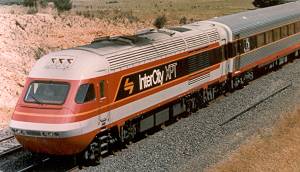 In 1981 the State Rail Authority (SRA) of New South Wales, Australia, introduced its InterCity XPT (Express Passenger Train). Fifteen power cars, similar to the British IC125 design, were built and Paxman supplied twenty 12 cylinder Valenta engines for the project. Because of local climatic and operating conditions the engines were downrated from 2,250 bhp to 1,980 bhp at 1,500 rpm. The first two power cars were built in 1981. Regular XPT passenger services commenced in April 1982 and build of the first batch of 10 power cars was completed in September that year. Shortly after its introduction the XPT raised the local rail speed record from 75 to 114 mph and by October 1988 the trains had run twelve and a half million miles. They proved so reliable and popular with passengers that in 1990 the SRA decided to build four more power cars with Paxman receiving an order for four more Valenta engines.
In 1981 the State Rail Authority (SRA) of New South Wales, Australia, introduced its InterCity XPT (Express Passenger Train). Fifteen power cars, similar to the British IC125 design, were built and Paxman supplied twenty 12 cylinder Valenta engines for the project. Because of local climatic and operating conditions the engines were downrated from 2,250 bhp to 1,980 bhp at 1,500 rpm. The first two power cars were built in 1981. Regular XPT passenger services commenced in April 1982 and build of the first batch of 10 power cars was completed in September that year. Shortly after its introduction the XPT raised the local rail speed record from 75 to 114 mph and by October 1988 the trains had run twelve and a half million miles. They proved so reliable and popular with passengers that in 1990 the SRA decided to build four more power cars with Paxman receiving an order for four more Valenta engines.
Vega Rail Traction Application
The Vega or SE, a smaller engine than the Ventura, was launched in 1986. In the late 1980s or early 1990s the Company re-engined one or two locomotives for Sri Lanka Railways using the Vega. Substantial Applications Engineering input was required to fit this into a locomotive originally designed for a quite different power unit.
A New Engine for the High Speed Train
Paxman commenced development of the Valenta's successor, the VP185, in 1987. The suggestion that British Rail participate in a trial of the new VP185 engine in an HST was first mooted in January 1991 and a formal agreement for the trial was signed in May 1993.
A qualifying requirement for the trial was that the engine should undergo a British Rail Type Test which was carried out between December 1993 and February 1994. The test involved completion of 3,000 cycles, each of 10 minutes duration, with four minutes at the maximum power of 2611 kWb (3,500 bhp) and six minutes at idle, simulating the typical 'on-off' nature of HST duty. The test was much more severe than operational duty where the train operates at a maximum of 1678 kWb (2,250 bhp). The successful results of the test cleared the way for installation of a VP185 in Power Car 43170 at Plymouth Laira Depot for in-service trials in the summer of 1994.
The engine was fitted with the 'DEMON' (Diesel Engine MONitoring) system, designed and developed by British Rail Research. Monitoring 43 different channels of information, transmitted by a Vodaphone link to Paxman engineers at Colchester and British Rail engineers at Derby, the system provided rapid on-line analysis of engine performance data. (15)
Power car 43170 entered service on 22nd September 1994. During a naming ceremony held at Paddington Station in mid-June 1995 this power car was named 'Edward Paxman' by Bernard Jenkin, MP for Colchester North. The benefits of the new engine were a 10 to 15% reduction in fuel consumption depending on duty conditions, a 70% reduction in lubricating oil consumption and a substantial reduction in smoke levels. As at September 2003, there were soon to be twenty five HST power cars with VP185 engines operating on the British rail network. Seven were in service with Great Western. The very last VP185 engine to be manufactured at Paxman's Colchester Works was despatched from the factory on 15th September 2003 for duty with Midland Mainline. When it came into service Midland Mainline would be operating eighteen power cars re-engined with the 12VP185, with a rating of 1,678kW at 1,500 rpm. The new engine more than proved itself in this most demanding of applications.
By November 2002 most, if not all, of the Australian XPT fleet of power cars had been re-engined with the VP185.
Links to other websites
See the Rail Traction section of our Links page.
Notes on History of British Railways
Railways in Britain were nationalised on 1st January 1948. The 'Big Four' railway companies of the 1923 Grouping, GWR, LMS, LNER and SR, became British Railways.
In January 1955 Sir Brian Robertson, Chairman of the British Transport Commission, announced the British Railways Modernisation Plan, part of which proposed large scale dieselisation of Britain's railways.
In 1964 British Railways was renamed British Rail.
Steam traction on the British Rail network finally ended on 8th August 1968.
References and Further Reading
1. Diesel Shunting Locomotives, paper by C E Fairburn MA read to the Institution of Locomotive Engineers on 30th April 1941. See also the article in LMS Journal No 2 (2002), 'Prototype Diesel Shunter No 1831' by Phil Chopping, pp.5-24. The latter is a detailed and properly researched account of the conversion, with transcriptions of relevant minutes of LMSR committee meetings and submissions to the LMS Board of Directors.
2. Visit to Hunslet Works (news item), Diesel Railway Traction, July 1950, p 161.
3. 25 Years of Railway Oil Engine Building (about Davey Paxman & Co), Unattributed, Diesel Railway Traction, March 1955, pps 76-82.
4. Stout Work - The railways of Arthur Guinness & Son Ltd, Park Royal, London NW10. Ian P Peaty, Railway Bylines, May 2000, pps 272-281. See also Guinness Time (company magazine), 1949, Vol 2, No 2, p 30.
5. Paxman's World, Summer 1956, p.28.
6. First Phase of British Modernisation Plan, Diesel Railway Traction, June 1955, p 165.
7. Gear-Drive Freight-Transfer Locomotive, Diesel Railway Traction, July 1950, pps 141-143. See also: 500 HP Diesel Mechanical 0-6-0 Locomotive - Southern Region, The Locomotive, July 1950, pp 100-101.
8. L.M.S.R. to Experiment with Main-Line Diesel-Electric Locomotives, The Railway Gazette, March 28, 1947, p 302.
9. British Railways Mixed-Traffic Diesel-Electric Locomotive, The Railway Gazette, November 24, 1950, pp 466,470. See also B.R. Mixed Traffic Diesel-Electric Locomotive, The Locomotive, December 15, 1950, pps 188-190.
10. The Paxman "Hi-Dyne" Engine for Diesel Traction, D M Pearce, AMIMechE, Chief Research Engineer, Davey Paxman & Co Ltd, a detailed paper published c. 1956. See also: The Hi-Dyne Engine, Colchester Newsletter No 7, Ruston-Paxman Group, September 1954, p 1.
11. Hudswell Clarke Constant H.P. Locomotive, Diesel Railway Traction, January 1955, pps 3-9.
12. Diesel Railway Traction, March 1955. '25 Years of Railway Oil Engine Building', pp.76-82.
13. Paxman Sales Engineers' Handbook, p.236.
14. Critical Factors in the Application of Diesel Engines to Rail Traction, W Petrook and W A Stewart, Proceedings of the Institution of Mechanical Engineers, Conference Proceedings September 1969 184: 25-31.
15. CONNECT - A Newsletter for GEC ALSTHOM Diesels Ltd, No 3 Spring 1995, p.3.
Acknowledgements: Thanks are due to a number of people and organisations who answered queries and provided material for the preparation and updating of this page. These included the late Denis Turner, formerly Applications Engineering Manager at Paxman, and the late Mike Gipson, formerly Overhauls Manager, MAN B&W Diesel Ltd, Paxman, who were very generous with their time answering questions and lending much useful material from their private collections for research. Also the late Michael Johnson, former 'Keeper of the Paxman archives', Lisa McElhinney, Assistant Archivist/Records Manager at the Guinness Archive, the National Railway Museum at York, the late Alex Walford, Bruce Knights of Knights Rail Services Ltd, Chris West and Don Meiklejohn, formerly Technical Support Engineer, MAN Diesel Ltd.
Page updated: 10 Jul 2024 at 14:14
